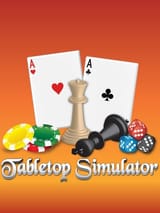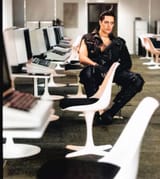>>96058592 (OP)It's the only thing that works if you want 3D, but isn't made for RPGs and it shows.
- It expects all assets necessary for a session to be bundled as a single "game" and loaded up front. You can pull in stuff from other downloaded "games" during play, but the interface for searching end loading is clunky. Individual assets are often not well-named or easily searchable, and it takes time to load the 3D models for each asset in a "game" before you can search.
- The idea of having huge outdoor battle maps is appealing, but the upper limit for table size is appealing, but the upper limit on table size isn't that big.
- The "undo" feature is worse than useless. It tends to lock up the server and wreck the game. There are a bunch of other ways to wreck games, including the obnoxious "table flip" button.
- It downloads and caches assets from wherever the asset bundle points during play, resulting in lots of frequent broken links for unmaintained workshop stuff. It has terrible behavior for this frequent occurrence (floating red debug messages and popup dialogs for each and every missing asset, with no way to figure out what the asset was supposed to be in most cases).
- It's poorly optimized. It's easy to bring a server to a crawl using scripts, detailed models, numerous models, etc. in combination.
- There aren't good built-in solutions for swapping maps in game. This has to do with the 1 session = 1 board game = 1 map assumption it's built around. There are workarounds, but most tend to be overcomplicated and take lots of prep time.
- Simulated physics is more often a problem than a benefit for RPGs. There aren't nice ways to make specific objects temporarily non-collidable or gravity-immune. If you lock things to disable physics, then those things can't be easily moved by players and won't track movement distance, etc.
- Object selection methods are poor. It's easy for things to become inaccessible due to being inside another object's collision model.


